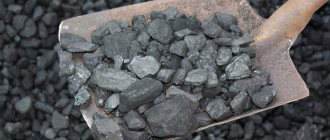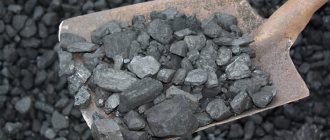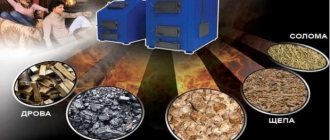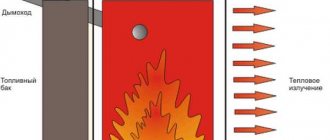Homemade gasoline options
The production of fuel for vehicles is a complex and high-tech process, requiring large expenses, from oil production to its processing and obtaining the final product. But due to the constant rise in fuel prices and the desire to reduce the cost of maintaining their car, craftsmen are looking for the opportunity to produce a product, an alternative to fuel, which they manage to obtain using various devices. Using various types of raw materials and materials as one of the components, the following types of fuel are produced:
- Methanol or methyl alcohol. This product is obtained by combining propane-butane gas and water vapor.
- Ethanol. Agricultural crops (corn, millet, etc.) are used in the production of ethanol.
- Biodiesel. Produced using vegetable oil and animal fats.
- Petrol. Old tires, waste rubber and rubber products are used to produce the final product.
- Petrol. Produced artisanally from crude oil.
- Petrol. By heat treatment of coal.
- Fuel. By gasification method.
- Petrol. Produced by processing household waste, household waste, plastic, etc.
And yet, how to make gasoline at home, you need to consider these methods.
Do-it-yourself biological fuel
Biofuel can also be obtained from human and animal waste.
This can be manure from large and small livestock, horses, pigs, poultry droppings, sewage, beet pulp, stillage after alcohol production, and much, much more. Getting energy is actually simple, because at home we have everything we need for this.
All of the above waste, like everything organic, begins to ferment over time due to the spread of bacteria. During the fermentation of manure and other waste, biogas is released, which can be used like natural gas. That is, biogas, like ordinary natural gas, can be used for heating, for using electricity, for refueling a car.
After the fermentation process, the resulting mass allows us to obtain environmentally friendly liquid and solid fertilizer with our own hands, which is perfect for use in agriculture. At the same time, the yield increases significantly.
Biodiesel fuel is already used in many European countries. The world's largest biodiesel plant is being built in Singapore. In addition, there are prerequisites that this type of fuel will soon enter the markets and residents of other countries will be able to appreciate its merits.
There are many video instructions on the Internet that tell you how to make biofuel at home. In these videos you can clearly see how you can use environmentally friendly raw materials without harming the environment and how high quality they are compared to conventional types of fuel.
You can talk for a long time about other options for producing biofuels at home and their advantages. In these difficult times (both environmentally and economically) this issue remains very relevant.
Recycling waste is a profitable business that brings many benefits. That's why turning it into a usable fuel is a tempting idea. There are many people trying to turn organic waste into high-octane gasoline using microorganisms and chemical processes.
What is methanol and how to make it?
To produce methanol, it is necessary to make a homemade distillation apparatus for mixing household gas and ordinary drinking water and a number of subsequent operations.
The operating technology of a homemade apparatus for producing methanol from water and propane-butane gas is to change the chemical composition of these elements under the influence of high pressure and temperature. Where, periodically cooling and changing, interacting with the catalyst, they pass into the state of synthetic gas and, after another heat treatment, into methanol.
Story
Ruins of a German synthetic gasoline plant ( Hydrierwerke Pölitz AG
) in Police, Poland
Direct conversion of coal to synthetic fuels was originally developed in Germany. The Bergius process was developed by Friedrich Bergius, resulting in a patent in 1913. Karl Goldschmidt invited him to build an industrial plant at his Th. Goldschmidt AG (now known as Evonik Industries) in 1914. Production began in 1919.
Indirect coal conversion (where coal is gasified and then converted into synthetic fuel) was also developed in Germany by Franz Fischer and Hans Tropsch in 1923. During World War II, Germany used synthetic oil production (German: Kohleverflüssigung
) to produce a substitute (
Ersatz
) for petroleum products using the Bergius process (from coal), the Fischer–Tropsch process (water gas) and other methods (Zeitz used the TTH and MTH processes). In 1931, the British Department of Scientific and Industrial Research, located in Greenwich, England, created a small plant where hydrogen gas was mixed with coal at extremely high pressure to produce synthetic fuel.
Bergius processing plants were Nazi Germany's main source of high quality aviation gasoline, synthetic oil, synthetic rubber, synthetic methanol, synthetic ammonia and nitric acid. Almost a third of Bergius's products were produced by factories in (Polish: Police
) and Leuna, another 1/3 in five other plants (Ludwigshafen had a much smaller Bergius plant that improved "gasoline quality by dehydrogenation" using the DHD process.).
Synthetic fuel grades included “TL fuel,” “premium aviation gasoline,” “aviation base gasoline,” and “gasoline—medium oil”; and "producer gas" and diesel fuel were also synthesized as fuel (for example, converted armored tanks used generator gas). By early 1944, German synthetic fuel production had reached over 124,000 barrels per day (19,700 m3/d) at 25 plants, including 10 in the Ruhr area. In 1937, four central German lignite plants at Böhlen, Lein, Magdeburg/Rothensee and Zeitz, and a bituminous coal plant in the Ruhr area at Scholven/Buer produced 4.8 million barrels (760 × 10 3 m 3) fuel. . Subsequently
Hydrierwerke
were built in Bottrop-Welheim (where "bitumen coal tar pitch" was used), Gelsenkirchen (Nordstern), Pölitze and in Wesseling with a capacity of 200,000 tons per year. Nordstern and Pölitz/Stettin used bituminous coal, as did the new Blechhammer plants. Heydebreck synthesized an edible oil, which was tested on concentration camp prisoners. Heilenberg Special Headquarters used 350,000 mostly foreign forced laborers to reconstruct bombed synthetic oil plants and, as part of an emergency decentralization program, to build 7 underground hydrogenation plants to protect against bombing (none of which were completed). (Planners rejected an earlier similar proposal because the war had to be won before the bunkers were completed.) In July 1944, Project Cuckoo's underground synthetic oil plant (800,000 m2) was "cut out of Himmelsburg". North of Mittelwerk, but the plant was unfinished at the end of World War II.
Indirect Fischer-Tropsch (“FT”) technologies were brought to the US after World War II, and HRI designed and built a 7,000 bbl/d (1,100 m3/d) plant in Brownsville, Texas. The plant represents the first industrial application of high-temperature Fischer-Tropsch conversion. It operated from 1950 to 1955, when it closed when the price of oil fell due to increased production and huge discoveries in the Middle East.
In 1949, the U.S. Bureau of Mines built and operated a demonstration coal-to-gasoline conversion plant in Louisiana, Missouri. Direct coal conversion plants were also developed in the United States after World War II, including a 3 tpi plant in Lawrenceville, New Jersey, and a 250-600 tpi plant in Catlettsburg, Kentucky.
In the following decades, a state-owned oil company was established in the Republic of South Africa, including a large production facility.
Making gasoline from coal
Fuel is mainly produced from oil. But many countries, without having oil reserves, also produce fuel using coal as a raw material. An example is the European countries that produced fuel using brown coal at the beginning of the 20th century.
In particular, pre-war Germany mainly obtained fuel in this way. Possessing large deposits of coal (meaning the Ruhr coal basin), the extraction of which and the production of gasoline were put on an industrial footing.
How gasoline is separated from coal
Gasoline was extracted from coal in two ways. Coal and oil are similar in their chemical composition to a common base, carbon compounds with hydrogen, only brown coal has fewer hydrogen molecules. By increasing the number of hydrogen molecules in coal, a substance is obtained that is equal in chemical structure to the composition of oil, which makes it possible in the future to produce gasoline. The production of gasoline by processing brown coal was developed by scientists from Germany in the 20s of the last century:
- Hydrogenation or liquefaction (Bergius method).
- Gasification and fuel synthesis (Fischer-Tropsch method).
What is hydrogenation
The technology for producing synthetic gasoline from brown coal by hydrogenation is as follows:
- Coal is finely crushed, mixed with a fatty and viscous liquid, using, for example, fuel oil or oil, obtaining a paste-like substance.
- The paste-like coal is placed in a sealed vessel, a catalyst and a solvent are added, where under high pressure (200 atm) and temperature (+500ºC) the coal is enriched, which occurs first in the liquid phase and then passes into the vapor phase.
- To obtain the final product, the resulting fuel from the autoclave is processed in a centrifuge, coke is removed and distilled.
It is most likely impossible to produce gasoline at home in this way due to the technological complexity of the equipment, the production of which using a homemade method is difficult and expensive.
Producing gasoline by gasification
The production of gasoline using the gasification method (Fischer-Tropsch method) occurs by first combining water and coal raw materials. In a sealed steam vessel with a temperature of +350ºС and a pressure of up to 30 atm, water vapor is blown under high pressure.
As a result, synthetic gas is formed, which is subsequently used for processing and fuel production. The resulting synthesis gas is placed in a second sealed vessel filled with a catalyst based on iron, nickel or cobalt. At the exit from the second vessel, fuel is obtained, from which gasoline and diesel are produced by cracking.
When producing fuel using this method, by-products such as paraffin and gaseous mixtures are obtained, a large proportion of which is carbon dioxide. This method of obtaining fuel is environmentally polluting and cost-ineffective.
There is also a thermal method for processing coal, similar to the pyrolysis process, in which the raw material is heated in a vessel from the outside, without the presence of oxygen. The process of decomposition of solid fuel and transition to a gaseous state occurs at a temperature of +1200ºС, which is extremely difficult to accomplish at home.
And to obtain the final product, additional equipment is needed. A positive feature of this method is the use of pyrolysis gases to heat raw materials and synthesize gasoline, which allows a slight reduction in the cost of the product.
Mechanism of gas formation from organic raw materials
Biogas is a volatile substance without color or any odor, which contains up to 70% methane. In terms of its quality indicators, it approaches the traditional type of fuel - natural gas. It has a good calorific value; 1 m3 of biogas emits as much heat as is obtained from the combustion of one and a half kilograms of coal.
We owe the formation of biogas to anaerobic bacteria, which actively work to decompose organic raw materials, which include farm animal manure, bird droppings, and any plant waste.
To activate the process, it is necessary to create favorable conditions for the life of bacteria. They should be similar to those in which microorganisms develop in a natural reservoir - in the stomach of animals, where it is warm and there is no oxygen.
Actually, these are the two main conditions that contribute to the miraculous transformation of rotting manure into environmentally friendly fuel and valuable fertilizers.
To produce biogas, you need a sealed reactor without access to air, where the process of fermentation of manure and its decomposition into components will take place:
methane (up to 70%);
carbon dioxide (approximately 30%);
other gaseous substances (1-2%).
The resulting gases rise to the top of the container, from where they are then pumped out, and the residual product settles down - high-quality organic fertilizer, which, as a result of processing, has retained all the valuable substances present in the manure - nitrogen and phosphorus, and has lost a significant part of pathogenic microorganisms.
The second important condition for the effective decomposition of manure and the formation of biogas is compliance with the temperature regime. Bacteria taking part in the process are activated at temperatures from +30 degrees. Moreover, manure contains two types of bacteria:
Moreover, manure contains two types of bacteria:
mesophilic. Their life activity occurs at a temperature of +30 – +40 degrees;
thermophilic. To reproduce them, it is necessary to maintain a temperature regime of +50 (+60) degrees.
The processing time of raw materials in installations of the first type depends on the composition of the mixture and ranges from 12 to 30 days. At the same time, 1 liter of useful reactor area produces 2 liters of biofuel. When using installations of the second type, the production time of the final product is reduced to three days, and the amount of biogas increases to 4.5 liters.
Despite the fact that the efficiency of thermophilic plants is tens of times higher, they are used much less frequently, since maintaining high temperatures in the reactor is associated with high costs.
Maintenance and maintenance of mesophilic type plants is cheaper, so most farms use them to produce biogas.
How to make gasoline from gas
To produce gasoline from gas, they use homemade equipment, but compact, small in size and light in weight, made of metal or stainless steel. The operating principle of the equipment is as follows:
- Propane-butane gas and water fill the mixing vessel, where water vapor is heated and mixed with gas. The temperature inside the mixer is +100…+120ºС.
- The mixed gas is fed into a sealed container P1 (reactor), which is filled with a catalyst (nickel shavings - 25% and aluminum - 75%), where synthetic gas is formed under the influence of temperature (+500ºС and above).
- From container P1, synthetic gas is supplied to the refrigerator, where it is cooled to +30…+40ºС.
- Synthetic gas under pressure is fed into a sealed container P2 with a catalyst (copper shavings - 80% and zinc -20%), where synthetic gasoline vapors are formed. In this case, the temperature in container P2 should not be higher than 270ºС.
- From container P2, synthetic fuel vapors are supplied to the refrigeration chamber, where it cools and condenses.
- The synthetic gasoline condensate and gas that is not dissolved in water go from the refrigeration chamber to the condenser, from where the synthetic product is drained, and the gas is sent for recycling.
How to produce gasoline at home - instructions
You know, my grandfather would have easily and easily made gasoline fuel at home! This is because the moonshine still is perfect for this event. All that remains is to find crude oil somewhere!
SO, the process is point by point:
- We are looking for a sealed container; there must be a gas outlet tube on top that will go into another container. A high-temperature thermometer should also be installed to monitor the temperature inside.
- Now we pour oil into the first container, set it to heat (you can even use gas, but this is explosive, because we get gasoline), it is better to use the electric option. We place the second container in a cold room, about + 5 degrees; if this is not possible, then we place the tube that goes to the container in the cold, or even line it with ice from the refrigerator.
- In the first container, heating begins, and as we have already seen from above, a temperature of 35 - 200 degrees is enough for the light fractions (gasoline) to begin to evaporate. Usually 100 - 120 degrees is enough. We heat it up and since the vapors enter a cold container or tube through a tube, they condense - they fall into a liquid state, into a second container.
Our fuel is ready! In essence, this is a method of direct distillation of oil. However, it will have a low octane number, as I already indicated above, about 50 - 60 units; in order to use it, you need to add additives - alcohols, alkyls, ethers. Thus, we will get the indicator we need 92 - 95. Of course, this is quite difficult to do at home, but through trial and error you can achieve a completely working formula. To be honest, the direct distillation method is as simple as “three kopecks.”
By the way, if we heat the remaining fractions at a higher temperature (+ 300, + 350 degrees), then we already get kerosene and diesel.
Didn't find the information you are looking for? on our forum.
We recommend reading:
What kind of oil to pour into the VAZ 21214 Niva engine injector
Why can't you fill up a full tank of gas? Main reasons
Motor oil Lukoil 5w40 semi-synthetic 4l. Characteristics
Motor oil Honda 5w30 ultimate full
Black motor oil, main causes
Longlife 98 engine oil
Timing for changing engine oil 5w40
BMW power motor oil 5w40. Characteristics
Making gasoline from tires
You can produce gasoline at home from tires if you have the necessary equipment, consisting of three metal barrels with tight-fitting lids, a distiller, a heat source (use a stove) and raw materials from which fuel can be obtained.
This technology is similar to pyrolysis; the decomposition products of heated raw materials from one barrel enter another, filled with water, where they are cooled under the influence of water and enter another container in the form of condensate. Thanks to the closed system of vessels, the by-product obtained as a result of pyrolysis, meaning methane, is used in the heat treatment of raw materials. To convert condensate into fuel, a distiller is used, similar to a moonshine still.
Considering the conditions under which the gasoline extraction process takes place, smoke, fumes, odors, we can say with confidence that such a process is not acceptable in an apartment or in a densely populated area.
Definition of the term synthetic fuel code
The term "synthetic fuel" has several different meanings and can include different types of fuel. The traditional definition set by the International Energy Agency defines "synthetic fuels" as any liquid fuel derived from coal or natural gas. The US Energy Information Association defines synthetic fuels in its 2006 annual report as fuels derived from coal, natural gas, biomass or animal feed by chemical conversion into synthetic oil and/or synthetic liquid products. Numerous definitions of synthetic fuel include fuels produced from biomass as well as industrial and municipal waste. On the one hand, “synthetic” means that the fuel is produced artificially. Unlike synthetic fuel, conventional fuel is usually obtained by separating crude oil into separate fractions (distillation, rectification, etc.) without chemically modifying the components. However, various chemical processes can also be used in the production of traditional fuels. The term “synthetic” can emphasize, on the other hand, that the fuel was produced by chemical synthesis processes, that is, the production of higher-level compounds from several lower compounds. This definition applies in particular to XtL fuels, in which the feedstock is first decomposed into synthesis gas of lower compounds (H2, CO, etc.) in order to obtain higher hydrocarbons (Fischer-Tropsch synthesis). However, even with conventional fuels, chemical processes can be part of the production process. For example, hydrocarbons with carbon chains that are too long can be broken down into shorter chain products, such as those found in gasoline or diesel fuel, through so-called cracking. As a result, depending on the definition, it may not be possible to clearly distinguish conventional from synthetic fuels. Although there is no precise definition, the term "synthetic fuel" is generally limited to XtL fuel. The difference between synthetic and alternative fuels lies in the method of application of the fuel. That is, alternative fuels may require more extensive engine or fuel system modifications, or even the use of a non-traditional engine type (such as steam).
The process of producing gasoline from oil using an artisanal method
To obtain gasoline from oil using a homemade method, you need two containers with a hermetically sealed closure, a heat source and cooling.
Oil is poured into a container and closed with a lid with a hole through which fuel vapors, when the container is heated to +180ºC, enter a second container through a pipe or hose, where, as they cool, the fuel will condense. It is not recommended to use the resulting fuel, since its octane number is low, and additives are needed to increase the octane number.
The remaining raw materials in the first container, kerosene, gas oil, etc., are distilled in the same way, but using a temperature of +450ºС.
As a precaution, when producing gasoline from oil, it is prohibited to use open flame sources.
You can produce fuel at home if you have the necessary equipment and knowledge. And you shouldn’t call homemade gasoline a “freebie,” because in addition to equipment and knowledge, you also have to put in a lot of work to get the product.
Direct distillation process
This is a very ancient method, it was invented at the dawn of gasoline engines. If you like, it is not distinguished by super technologies, and it can easily be repeated in every home, more on that a little later.
The physical process itself consists of heating oil and evaporating from it the necessary compositions in turn
. The process occurs at atmospheric pressure and in a closed container in which a gas exhaust tube is installed. When heated, volatile compounds begin to evaporate from oil:
- Temperature from 35 to 200 °C – we get gasoline
- Temperature from 150 to 305 °C – kerosene
- From 150 to 360 °C – diesel fuel.
After which they are simply condensed into another container.
But there are a lot of disadvantages with this method:
- We get very little fuel - so from one liter we get only 150 ml. gasoline.
- The resulting gasoline has a very low octane number, approximately 50 - 60 units. As you understand, to catch it up to 92 - 95, you need a lot of additives.
In general, this process is hopelessly outdated; in modern conditions it is simply not commercially profitable. Therefore, many processing enterprises have now switched to a more profitable, advanced manufacturing method.
Better than in nature
Back at the end of the last century N.D
Zelinsky drew attention to the difference in the structure of oil molecules. Most of the molecules of high-quality Baku oil are closed rings of carbon atoms, to which hydrogen atoms are attached on the sides
The high quality of fuel primarily depends on this cyclic structure of molecules. Grozny oil contains less naphthenes - cyclic hydrocarbons. It is dominated by molecules of the methane series, stretched in the form of chains of atoms. Gasoline obtained from Grozny oil, when compressed in the engine cylinders, detonated and spontaneously exploded much earlier than the moment when the ignition spark jumped between the electrodes of the spark plug.
This phenomenon caused a lot of trouble for chemists and engine builders, who always sought to increase engine power. The power and efficiency of an engine depends primarily on how strongly the pistons in the cylinder compress the combustible mixture. The compression ratio (that is, the ratio of the volume of the entire cylinder to the volume of the combustible mixture extremely compressed in the cylinder) is one of the most important characteristics of the engine. The higher the compression ratio, the more powerful and economical the engine. If, for example, you increase the compression ratio of a car engine from 5.25 to 10.3, then the car, moving at a speed of 40 km/h, will consume half as much fuel and will travel twice as far on one tank of gasoline.
But here's the problem: the vapors of regular gasoline cannot withstand high compression and detonate. The engine quickly overheats and begins to knock, as if it is about to fall apart. Its power drops sharply.
During detonations, the piston rings and piston crown burn out, and the bearings are destroyed.
These fuel properties are assessed by the so-called octane number. If they say that the octane number of a fuel is 60, this means that its detonation properties are the same as those of a mixture containing 60% isooctane and 40% heptane. These two substances were not taken as a standard by chance: isooctane resists detonation very well (its octane number was therefore set to 100), and heptane, on the contrary, detonates more easily than all other liquid hydrocarbons (its octane number was taken to be 0).
The result is a kind of scale by which you can find out how it detonates and whether this or that type of gasoline is of high quality.
The higher the octane number of gasoline, the stronger the combustible mixture can be compressed in the cylinders without fear of detonation, the more powerful and economical the engine. At first, aircraft engines ran on gasoline with an octane rating of 50-55. The use of 87 octane gasoline in aviation made it possible to increase engine power by 30-35%, and the advent of 100-octane gasoline helped increase engine power by another 15-30%. In other words, modern engines have become almost twice as powerful as “old” engines with the same cylinder capacity.
It would seem that the quality of 100-octane gasoline is the limit set by nature itself. But this limit, like many others, was managed to be crossed by science, armed with advanced technology. Modern airplanes fly on gasoline with an octane rating much higher than 100. There is no oil in the world that contains gasoline of such high quality. Such gasoline can only be obtained artificially - through synthesis.
The synthesis of hydrocarbons has long been a tempting goal for many generations of chemists. Academician N.D. Zelinsky wrote in 1931: “When a chemist gets acquainted with the structure of petroleum hydrocarbons and studies their properties, he cannot help but be surprised at how easily nature has created these amazing forms, which are so difficult to prepare synthetically.”
Nowadays, high-quality liquid fuels are obtained from low-quality gasolines and gases by rearranging straight chains into branched and ringed structures.











